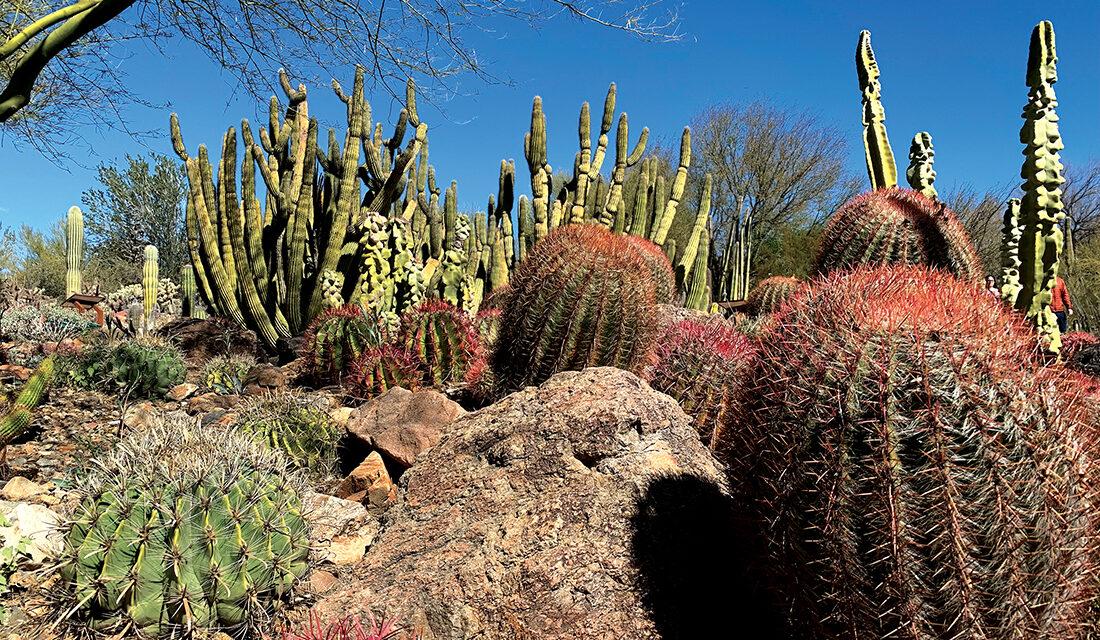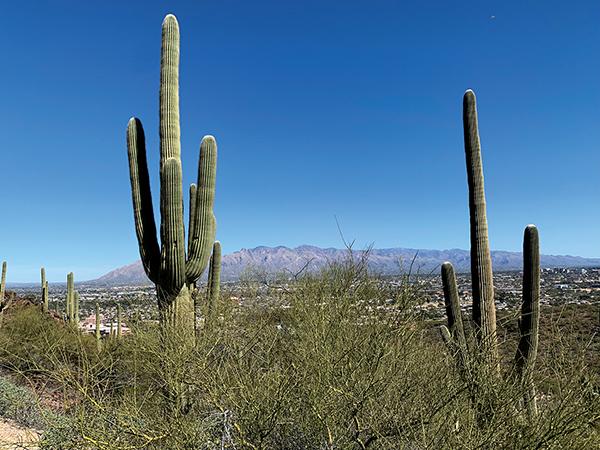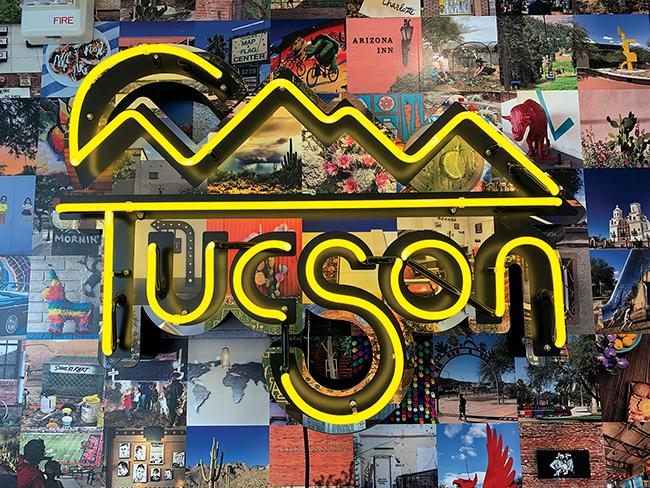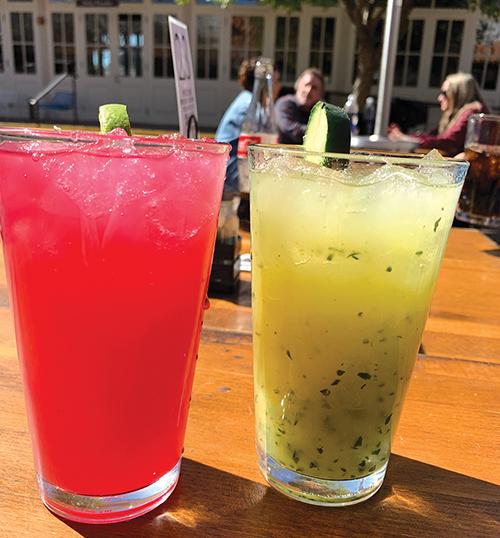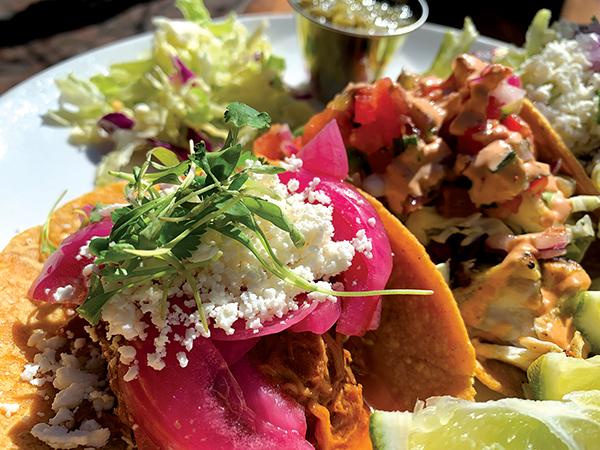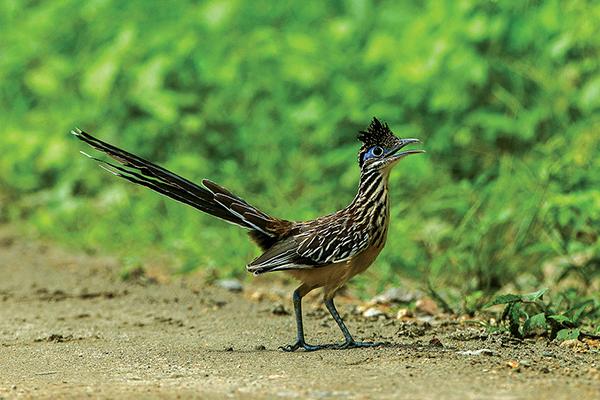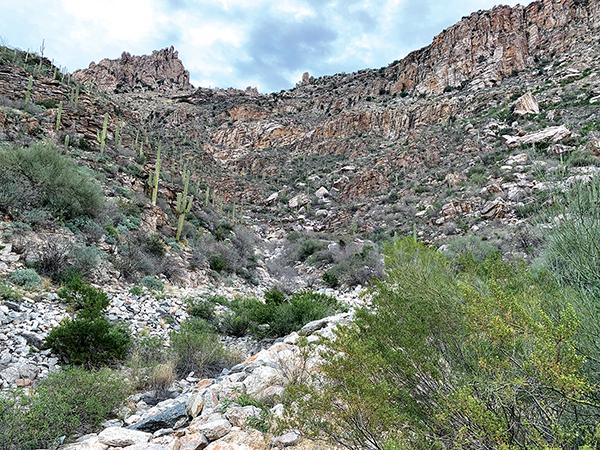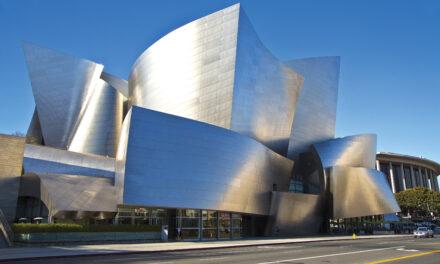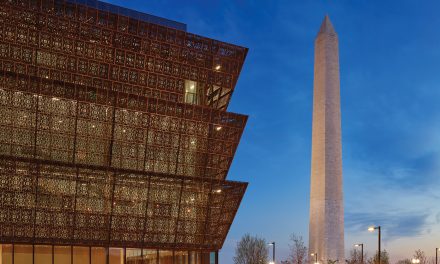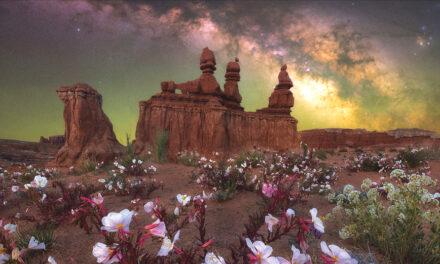USA
Saguaros, Sunshine and Sumptuous Gastronomy
Smitten with Tucson, Arizona
Article and photography by Jennifer Merrick
Though prickly and somewhat intimidating, I fell in love at first sight. Driving to Tucson, the saguaro cacti stood proud in the desert with their arms stretched out high. The landscape was so alien from the pines and mixed hardwoods of home that I felt I had jumped through the TV of my childhood and landed in an episode of The Road Runner Show.
With an average height of 40 feet, the saguaro image is a symbol of the American West. In fact, it only grows in the Sonoran Desert and can be found almost exclusively in southern Arizona and western Sonora, Mexico.
But in this limited area they were plentiful. And wherever we went, this King of Cactus greeted us.
At the Desert Museum, my appreciation deepened when I learned the life span of the slow-growing plant was between 150 – 200 years, and that it took 50 to 75 years for their arms to appear. The 98-acre property was more a combination of botanical garden and wildlife preserve than a ‘museum’. Not only did we find out more about my newly beloved saguaros, but we also viewed indigenous wildlife (including Mexican gray wolves, mule deer and the pig-like javelinas), marvelled at the colours and varieties at the interpretive cacti gardens, oohed and aahed at the gemstones displayed in an underground cave and hiked the Desert Loop Trail.
Surrounded by my latest infatuation, I was reluctant to leave. But I needn’t have worried. We drove away on the scenic Gate’s Highway, where hundreds of giant spiny arms saluted as we wound our way through the Tucson Mountains.
Once in the city, a rival Tucsonan suitor vied for my affection –gastronomy.
“Tucson punches way above its weight when it comes to food,” said Chef Mat Cable, co-owner of Zio Pepe, an Italian eatery. He credits the camaraderie of the local chefs who challenge each other in their creative use of local ingredients. Zio Pepe uses heritage grains, indigenous to Arizona, in their thin-crust pizzas.
“It took us two months to perfect the recipe,” said Cable. It was a winner, and the textured nutty flavours complemented the original toppings.
At Coronet, a stylish restaurant in the historic Coronado Hotel, our palates delighted in the innovative menu items, which used the freshest of local ingredients, especially the region’s citrus. The butternut, kohlrabi, radicchio salad, for example, featured bruleed grapefruit, herbed pistachio cream and sunflower sprouts.
Flavours from Tucson’s southern neighbour play a strong influence on its culinary scene –not surprising considering over 40 percent of residents have Mexican heritage and its location 70 miles from the border. The small but spicy chiltepin chili, for example, adds a fiery kick to locally-inspired dishes. Mexican restaurants all over the city offer a variety of authentic experiences and flavours. At Seis Kitchen, named for the six culinary regions of Mexico, we sampled a variety of tacos on housemade corn tortillas with refreshing agua frescoes as we enjoyed the outdoor courtyard and sunshine (by the way, Tucson has 350 days of sun a year). El Charro, whose claim to fame is being the oldest Mexican restaurant in the US with continuous operation by the same family, was another tasty meal with its signature sun-dried carne seca.
Indeed, it seemed impossible to have a mediocre dining experience in the Old Pueblo and its culinary offerings wooed us continuously with divine meals at Cup Café, 5 Points Market, Prep & Pastry and Tito & Pep. I now understood how Tucson earned its UNESCO designation as a Capital of Gastronomy, an honour bestowed on only two US cities (the other being San Antonio). Key factors in obtaining this honour are the region’s agricultural heritage and culinary distinctiveness. We learned more about both on a visit to Mission Gardens.
“Tucson’s birthplace was here,” said Kendall Kroesen, the Garden’s outreach coordinator. He explained that the flooding of the Santa Cruz River combined with the black volcanic soil created fertile land for growing crops. Today, it’s an archaeological site and education centre, showcasing six distinct gardens from different historical periods and cultures.
The sweet scents of citrus and fresh herbs permeated the air as we walked through the various gardens and Kroesen explained how some of the desert plants were used. The prickly cacti might look inedible and unconducive for harvest, but we learned firsthand that wasn’t the case when he sliced open a cactus fruit and offered a taste.
Citrus was plentiful and since all the varieties came from heritage trees found in the region, the flavours were different than those in the supermarkets. To prove his point, Kroesen offers a taste of a lime. My mouth got ready to pucker anticipating a sour taste that never came as these limes were sweet.
“But the oranges are sour,” said Kroesen.
After a visit to Mission Gardens, I understood better how the cultural influences and Sonoran Desert vegetation laid the foundation of the city’s gastronomic greatness.
With so much good food, it was fortunate for my waistline that Tucson’s hiking was equally awesome.
Five mountain ranges surround the city (Tucson Mountains, Tortolita Mountains, Santa Catalinas, Santa Ritas and Rincon), and you could hike a lifetime here, but we fit in what we could, hitting these classic spots:
Saguaro National Park was iconic, showcasing my beloved saguaros in all their glory and offering more than 165 miles of hiking trails both in the Tucson Mountain District in the west and the Rincon Mountain District in the east.
“Welcome to Tumamoc Hill, an oasis of desert in the heart of the city, a National Historic Landmark, a sanctuary, a beacon, a summit with panoramic views,” read the sign that perfectly summed up this hike. Though at times it might have felt like a Stairmaster, the views of the city and surrounding mountains were worth every huff and puff.
Located in Tucson’s Coronado National Forest, Sabino Canyon was a natural wonder with rugged desert terrain and rocky outcroppings. A 30-minute tram ride that crossed nine stone bridges took us to a lookout point, where we were treated to panoramic views. There was also access to more remote hiking trails, but limited by time, we opted to hike down, and the landscape once again awed us.
This was sadly the last hike of our Tucson trip. You might think that after being around so many saguaros throughout the visit they would have lost some of their novelty. But this was not the case, and I was as smitten as ever.
And what should I happen to see at the end of our hike?
A roadrunner! Beep, beep!
I looked around just in case the coyote was hiding behind a saguaro with some ACME dynamite.
If you go: Flair Airlines offers non-stop flights to Tucson from five Canadian cities. It’s also less than a two-hour drive from Phoenix. For accommodation, an excellent choice for a city stay is the Tuxon, a stylishly designed, boutique hotel that offers curated events, including star gazing. Outside the city centre is Hacienda del Sol, which offers a tranquil and luxurious experience on their beautifully landscaped 43-acre property.

